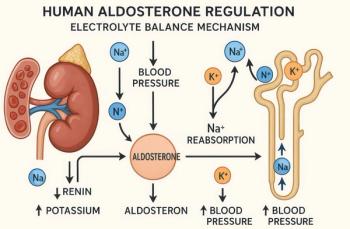
Nonsustained Ventricular Tachycardia
An 8-year-old boy was brought to his pediatrician for well-child care. On physical examination, an irregularly irregular heart rate was detected.
An 8-year-old boy was brought to his pediatrician for well-child care. On physical examination, an irregularly irregular heart rate was detected.
Figure 1 - A baseline rhythm strip demonstrates 2 separate 4-beat runs of nonsustained ventricular tachycardia at a rate of approximately 150/min.
Figure 2 - This ECG demonstrates sinus tachycardia with suppression of ventricular ectopy during exercise.
The child had no symptoms and had grown and developed normally. He had no history of chest pain, palpitations, or respiratory distress, nor was he taking any medications. The remainder of the examination was normal.
The boy has been active, has good exercise tolerance, and has never had a near-syncopal or syncopal event. There is no family history of syncope or unexplained sudden death.
The patient was referred to a pediatric cardiologist. Echocardiography revealed normal intracardiac anatomy. The patient exercised to maximum predicted work during stress testing and achieved the maximum predicted heart rate without symptoms. Ventricular ectopy was suppressed during exercise.
Ventricular tachycardia may be an indicator of underlying cardiac pathology, write Jared C. LaCorte, MD, and Michael A. LaCorte, MD, of New Hyde Park, NY. Children with this rhythm disturbance therefore need appropriate cardiac evaluation. Doppler echocardiography should be performed to rule out primary myocardial disease, tumors, and obvious right ventricular dysplasia. Cardiac catheterization and/or cardiac MRI is indicated in patients in whom significant pathology is suspected. If the patient is asymptomatic and the ectopy is suppressed with exercise, then the prognosis is likely to be benign. Because patients with no anatomic substrate for their ventricular tachycardia are resistant to antiarrhythmic therapy, they are often untreated. The arrhythmia may also disappear spontaneously, as it did in this patient.
FOR MORE INFORMATION:
- Allen HD, Moss AJ, Adams FH. Moss and Adams Heart Disease in Infants, Children, and Adolescents. 6th ed. Philadelphia: Lippincott Williams & Wilkins; 2001:522-530.
- Garson A, Bricker JT, Fisher DJ, Neish SR. The Science of Pediatric Cardiology. 2nd ed. Philadelphia: Lippincott Williams & Wilkins; 1998:2136-2148.
Newsletter
Enhance your clinical practice with the Patient Care newsletter, offering the latest evidence-based guidelines, diagnostic insights, and treatment strategies for primary care physicians.













































































































































































































































































